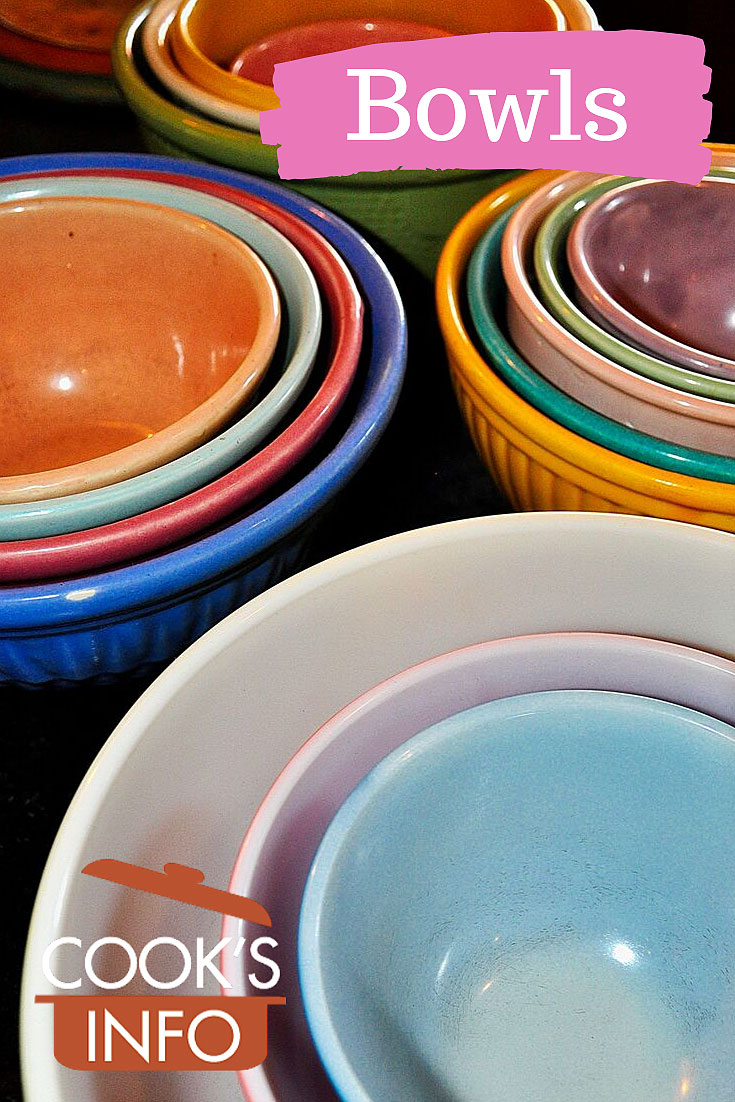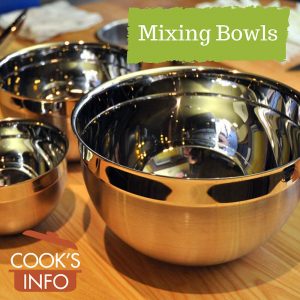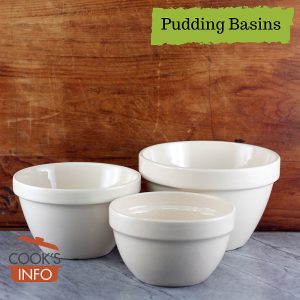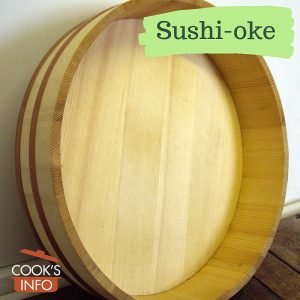
Mixing Bowls. Mark Martins / Pixabay.com / 2017 / CC0 1.0
Bowls are often suggested as priority candidates for a place on the list of the earliest cooking tools devised by man. “Found bowls”, some speculate, may have been indentations in rocks or logs. Other vegetation provided bowls also: the archaeological record shows that “tough-rinded vegetable gourds of various kinds made very handy prehistoric bowls…” [1]Wilson, Bee. Consider the Fork: A History of How We Cook and Eat . Basic Books. Kindle Edition.
Bowls have been carved from wood, rock, gemstone, and even ice, and fashioned from metals precious and base, plastics, clay and porcelain.
They can be used for storage, for working in, for serving from and for eating out of. Bowls can be used for all meals — breakfast, lunch, dinner — and all courses, as well as for snacks. Bowls are even used for personal ablutions at the table, in the form of finger bowls.
Bowls determine the cutlery used for eating an item of food:
“When bowls were used for all meals, the ideal implement was a spoon with an angled handle for digging deep, like a ladle… A knife or fork with horizontal handles does not sit naturally in the curved structure of a trencher or a pottage bowl. They need a flat surface. Try to eat something in a deep cereal bowl using a knife and fork, and you will see what I mean; your elbows hunch up and your ability to use the cutlery is severely restricted.” [2]Wilson, Bee. Consider the Fork.
At one time, the roles of cups, glasses and bowls blended and merged with each other. You might drink your wine from a vessel that we would now call a bowl, and expect only food to be served out of it, as opposed to beverages.
A good bowl was an item prized by its owner, and passed on, before our modern era of overabundance of everything led to our regarding them as disposable items, but still, many cooks have their preferred mixing bowls that they won’t let out of their sight.




